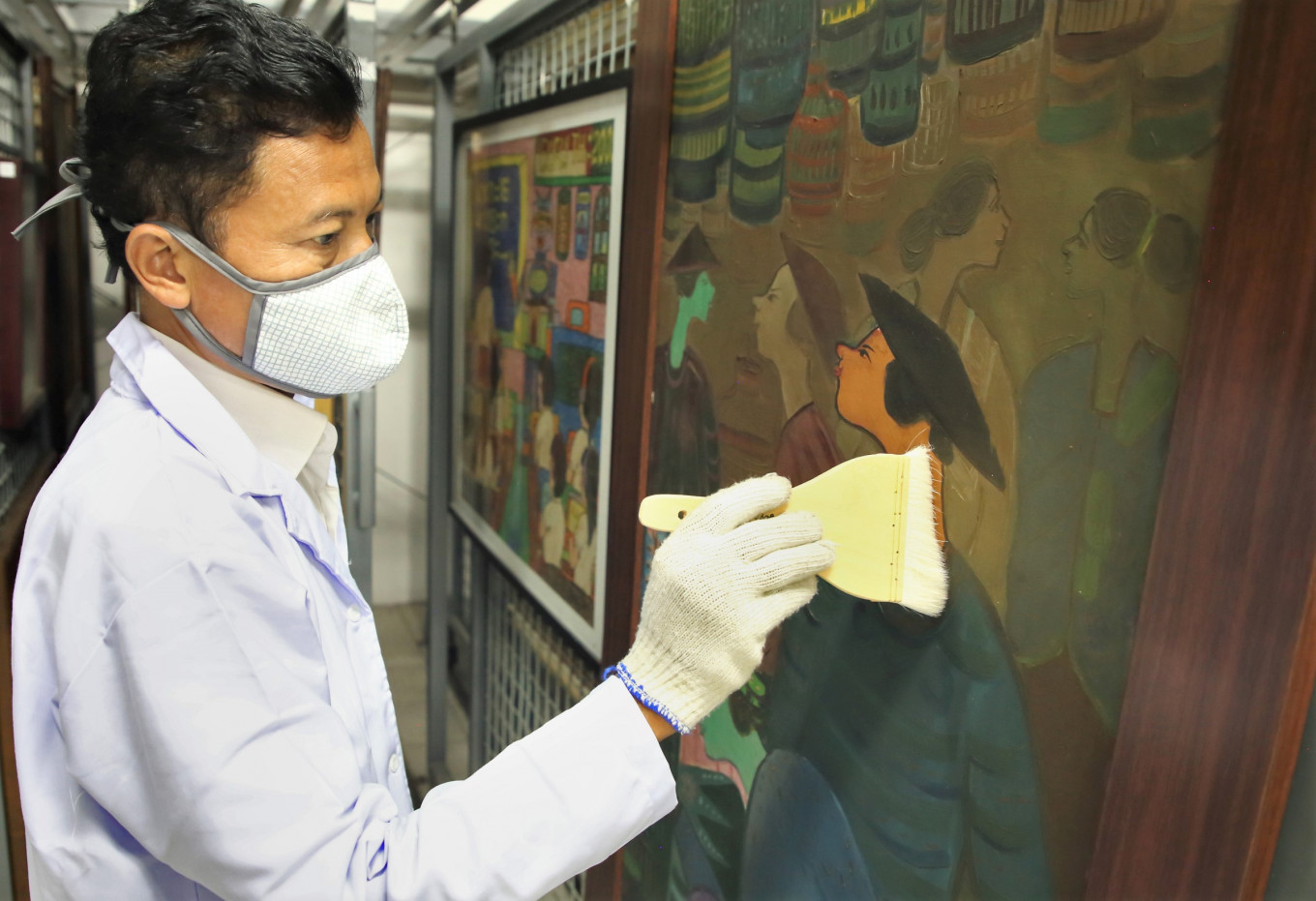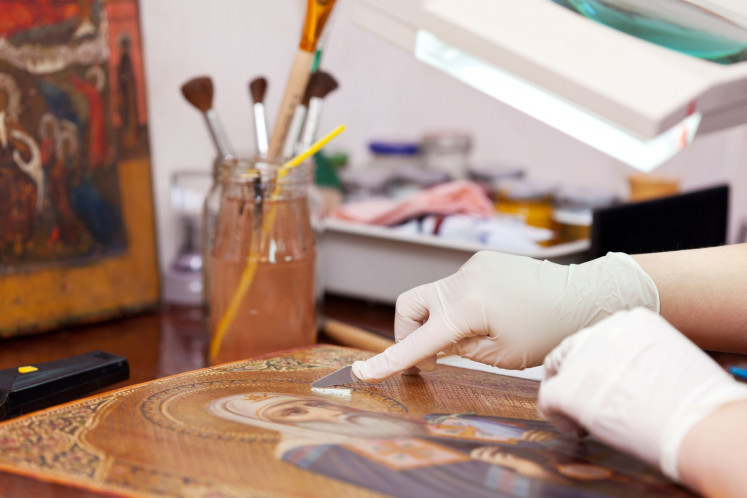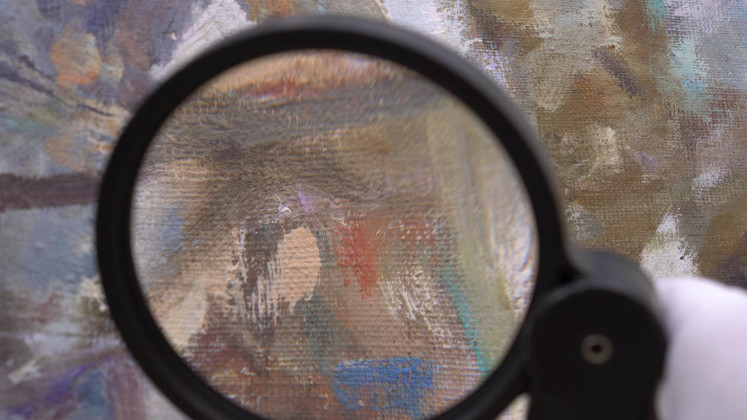Popular Reads
Top Results
Can't find what you're looking for?
View all search resultsPopular Reads
Top Results
Can't find what you're looking for?
View all search resultsArt talk: A conversation about conservation
A painting can be many things at once: a conversation starter, a think piece, an expression of ideals or even just something to spice up a room.
Change text size
Gift Premium Articles
to Anyone
As pleasing as they can be to look at, one thing they don’t often discuss is the importance of art conservation.
Though certainly not as glamorous as discourses on artistic styles and subliminal messages, conservation is as important an issue. After all, they keep artworks pristine for the next generation to enjoy and appreciate.
In a webinar hosted by the National Gallery, gallery head Pustanto explained that paintings were generally conserved for four reasons: history, authenticity, knowledge and value.
“For example, we can learn from a Raden Saleh painting the pigment used in the era and how it contributed to the painting’s longevity. Conversely, we’ve seen newer paintings by other artists that didn’t have the same longevity,” he said.
At the same time, conservation cannot “improve” a piece of work. When a painting is damaged, Pustanto explained, it could only be restored to the state it was before. Anything else will remove the work’s value, both historical and artistic.
Jarot Mahendra, a conservator for the National Gallery, said the Raden Saleh painting currently in the gallery’s collection – Kapal Karam Dilanda Badai (Ship Wrecked by Storm) from 1840 – benefited from high quality paint and had suffered only minor cracking that was expected from a painting created in the 19th century.
“Like our skin getting wrinkles, a painting will crack over time as the particles inside the paint moves. When the water or oil-based medium hardens, its flexibility decreases. In turn, the particles will shift to where the bond is stronger, which causes the cracks to appear.”
A layer of protection is usually applied with the help of varnish. While the coating is transparent at first, exposure to the elements can cause the layer to fade or turn yellow.
“Because of this, we have to be aware whether the stains and dirt we are removing have penetrated the paint or just adhered to the varnish. [...] In a way, conservation is a matter of expertise, not skill. Not everyone can become a conservator without having a strong set of knowledge,” Jarot said.
He pointed out one example: the infamous Elias Garcia Martinez fresco circa 1930 painted on the walls of the Santuario de Misericordia de Borja church in Zaragoza, Spain, which was ruined by a well-meaning but rather inept parishioner in 2012.
Up close: A painting is being examined and appraised. (Shutterstock/Fevziie)As for the National Gallery’s conservation efforts, fellow conservator Iwa Akhmad Surnawi explained that the first step was to ensure all the data and information were correct and accounted for, from the painting’s condition to its accompanying documents.
After that, the paintings are to be placed in an appropriate location, be they the gallery floor, guest reception area or storage.
Finally, the paintings can then be assessed routinely, which involves report cards, surveys and a classification of the damage, before coming up with a recommendation for the appropriate steps.
Even so, Indonesia’s tropical climate does not lend an ideal environment for the storage and display of paintings. While a climate-controlled location can be feasible for some buildings, that is not the case for many.
Pustanto noted the widespread usage of air conditioning to control a room’s temperature but said this was not a must-have – even too-cold temperatures from having the air conditioning on full blast for 24 hours can cause damage. As long as the temperature and humidity is kept constant, then damage can be prevented.
Instead, Iwa suggested good circulation to prevent humidity – simple methods any art aficionado can surely do.
“But there is a need for periodical checks and maintenance, which can be done daily, weekly or monthly. [...] Preventative conservation is effective and efficient as it does not require a large amount of money – it’s just our own due diligence. I think everyone can do it,” he said. (ste)












